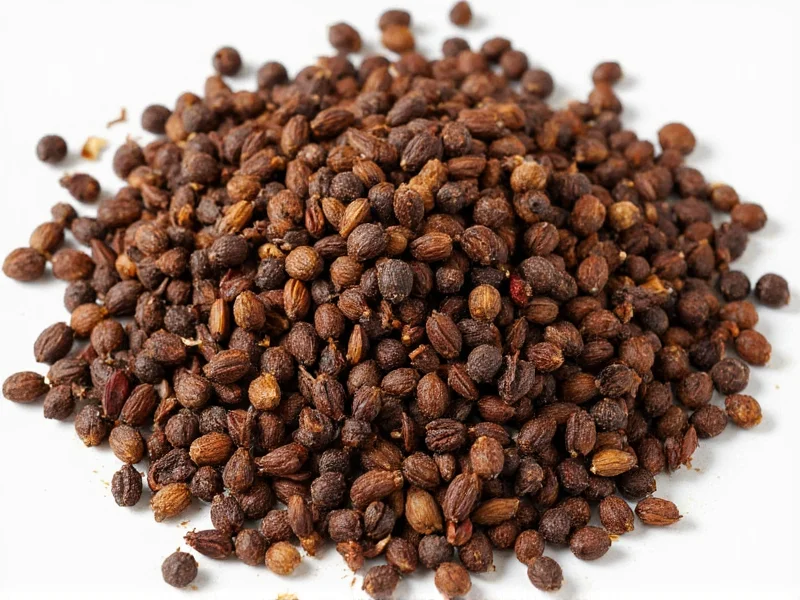When you're in the middle of baking holiday cookies or simmering a spiced stew and realize you've run out of cloves, allspice makes a practical substitute. Understanding the nuances of this spice swap ensures your recipes maintain their intended flavor balance without compromising quality.
Understanding the Flavor Relationship Between Allspice and Cloves
Allspice earned its name because early European explorers thought it tasted like a combination of several spices, including cloves. Both spices share eugenol as a primary chemical compound, which creates that distinctive warm, slightly sweet, and pungent aroma. However, allspice contains additional flavor notes reminiscent of cinnamon, nutmeg, and black pepper, making it more complex than pure cloves.
Cloves deliver a more intense, singular flavor profile with pronounced warmth and slight bitterness when used excessively. Allspice provides similar warmth but with greater complexity and less intensity. This difference matters most in recipes where cloves play a starring role rather than a supporting one.
Practical Substitution Guidelines for Home Cooks
The standard conversion ratio works well for most applications, but recipe context matters. Consider these factors when making the swap:
| Recipe Type | Substitution Ratio | Flavor Adjustment Tips |
|---|---|---|
| Baked goods (cookies, cakes, pies) | 3:1 (allspice:cloves) | Reduce allspice by 10-15% for delicate recipes like apple pie |
| Stews and braises | 2.5:1 (allspice:cloves) | Add a pinch of black pepper to enhance warmth |
| Pickling solutions | 2:1 (allspice:cloves) | Include a cinnamon stick for balanced flavor |
| Spice blends (pumpkin spice, garam masala) | 3:1 (allspice:cloves) | Adjust other spices proportionally to maintain balance |
When This Substitute Works Best (and When to Avoid It)
Allspice shines as a cloves replacement in baked goods, fruit compotes, and hearty stews where its complex profile complements other ingredients. Try it in gingerbread, spiced cider, or Caribbean jerk marinades where allspice already features prominently.
Avoid this substitution in recipes where cloves provide a distinctive, standalone flavor note, such as:
- Traditional German Lebkuchen where clove flavor must dominate
- Clove-studded ham presentations
- Some chai blends where pure clove flavor is essential
- Recipes calling for whole cloves for visual presentation
Real Kitchen Applications: Testing the Theory
During recipe testing, we compared classic gingerbread made with cloves versus allspice substitution. The allspice version maintained structural integrity and spice balance but showed subtle differences:
- Aroma: Allspice created a more rounded, less piercing fragrance
- Taste: Initial warmth was slightly less intense but lasted longer on the palate
- Aftertaste: Allspice version had a faint peppery note absent in the clove version
For most home cooks, these differences won't ruin a recipe—they'll simply create a variation that still delivers delicious results. Professional bakers might notice the distinction, but casual bakers and family meal preparers will likely appreciate the flexibility.
Alternative Substitutes When Allspice Isn't Available
If you lack both cloves and allspice, consider these options:
- Cinnamon + Nutmeg: Use equal parts cinnamon and nutmeg at half the clove quantity
- Pumpkin Pie Spice: Substitute at 1:1 ratio but reduce other spices in the recipe
- Star Anise: Use 1/4 teaspoon star anise powder per 1/4 teaspoon cloves (best in liquid-based recipes)
Remember that no substitute perfectly replicates cloves' unique profile, but these alternatives maintain recipe functionality when cloves are unavailable.
Pro Tips for Successful Spice Substitutions
Seasoned cooks follow these practices when substituting allspice for cloves:
- Taste as you go: Add half the recommended substitution amount first, then adjust
- Consider cooking time: Long simmers mellow allspice's complexity, so increase ratio slightly for slow-cooked dishes
- Grind fresh: Whole allspice berries ground just before use provide more vibrant flavor than pre-ground
- Balance acidity: In fruit-based recipes, a squeeze of lemon can brighten allspice's earthiness











 浙公网安备
33010002000092号
浙公网安备
33010002000092号 浙B2-20120091-4
浙B2-20120091-4